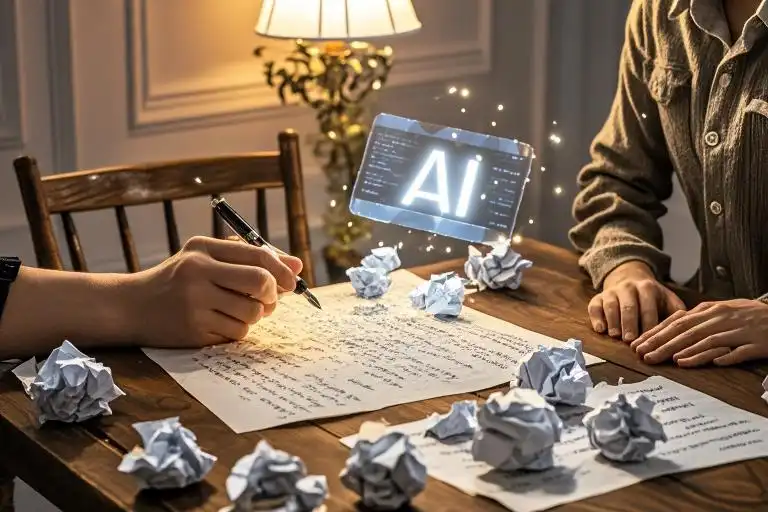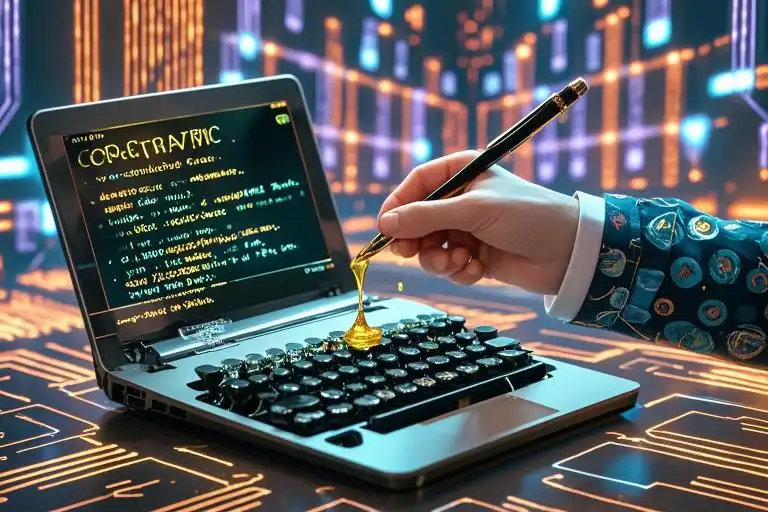You smell the coffee-stained script pages before you see them. A veteran showrunner’s fingers hover over her keyboard, trembling between keystrokes. Across Los Angeles, studio servers hum with algorithmic anticipation, digesting decades of Oscar-winning dialogues. This isn’t sci-fi – it’s the reality that fueled the 2023 Writers Guild strike, where 11,500 pens-down moments forced Hollywood to confront its Frankenstein’s monster.
Let’s peel back the velvet curtain.
When Algorithms Dream of Dialogue
My neighbor Jake – a Netflix writers’ assistant – still carries his 2007 Final Draft license like a talisman. “This?” He tapped the AI script-coverage tool his showrunner mandated. “It’s like dating a mind-reader who steals your wallet.” The contradiction stings: AI tools promise liberation from grunt work (goodbye, continuity errors!), yet whisper threats of obsolescence.
Consider “ScriptSense,” the AI that analyzed Succession episodes to generate Kendall Roy-caliber meltdowns. Impressive? Absolutely. Terrifying? When Warner Bros. tested AI-generated Friends reboots, the jokes landed like canned laughter at a funeral. The real horror isn’t the output quality – it’s executives believing audiences won’t notice the missing human spark.
The Ink-Stained Rebellion
Remember the picket signs that read “ChatGPT Can’t Catch My Pop-Pop’s Brooklyn Sass”? During the 148-day strike, writers didn’t just fight for residuals – they waged war against data vampires. Studios wanted to feed 100 years of screenplays into AI models. Writers demanded: “Our words aren’t algorithm chow!”
The compromise? WGA’s 2023 deal bans AI from writing or rewriting scripts, but permits its use as a “research tool” with consent. Translation: Studios can’t replace writers with bots, but might pressure them to collaborate with digital ghosts. It’s like allowing painters to use Photoshop… if Photoshop kept suggesting “better” brushstrokes.
Coffee Rings vs. Clean Code
Here’s where it gets messy. Emmy winner Sarah Goldberg swears by her “AI bullshit detector” – custom software that flags clichés. “It’s my snarky robot intern,” she laughs. Yet when Amazon Studios used AI to “optimize” a rom-com’s meet-cute scene, the result felt… engineered. Like heart-shaped algorithms instead of heartbeat moments.
The tension? AI excels at pattern replication but stumbles at truth. It can generate a perfect Breaking Bad knockoff, but misses why Walter White’s descent chilled us. As playwright Lin-Manuel Miranda tweeted during the strike: “Algorithms know what worked. Artists know what works.”
Your Laptop’s Unseen Co-Author
Let’s get practical. Imagine typing “INT. DIVE BAR – NIGHT” when a pop-up suggests: “Based on 542 noir scripts, add flickering neon sign reflecting in whiskey glass.” Helpful? Creepy? Both. AI writing assistants (like Sudowrite or Jasper) now influence 37% of streaming pilots according to WGA data. The danger isn’t replacement – it’s subtle homogenization, like every screenplay getting the same algorithmic filter.
But here’s the twist: Underground writer collectives are hacking these tools. One group trained an AI solely on radical feminist plays, creating a digital Lorraine Hansberry. Another uses ChatGPT to generate intentionally awful first drafts. “The worse it is,” grins indie writer Carlos, “the clearer my unique voice becomes.”
The Copyright Catastrophe Waiting to Happen
Picture this: An AI generates dialogue eerily echoing The Social Network‘s razor-sharp exchanges. Who owns those words? Aaron Sorkin? The AI developer? The studio that trained the model? Current U.S. copyright law says… crickets. The U.S. Copyright Office’s 2023 stance? “Only human creations qualify.” Tell that to the producer eyeing AI-generated scripts as “public domain.”
The real bombshell: When AI analyzed 50,000 scripts, it identified 137 recurring “narrative DNA” patterns. Studios now push writers to follow these “proven” templates. It’s the ultimate irony – machines using our collective creativity to constrain individual imagination.
The Human Algorithm
During strike negotiations, a studio exec infamously quipped: “We need writers to train the AI that might replace them.” The room froze. Then Shonda Rhimes snapped: “Replace this.” She tossed her pen on the table. Its inscription: “Emmy Winner 2013.” The message? Technology can replicate words, but not lived experience.
Perhaps the answer lies in what I call “the messy middle.” AI as collaborator, not competitor. Imagine:
- Ethical Training: Only using scripts from writers who opt-in, with royalties
- Human Oversight: Mandating AI-disclosure credits like “Bot-Assisted”
- Creative Safeguards: Legal protection against AI plagiarism
As the strike taught us, the future isn’t about banning AI, but bending it to serve human stories. Your coffee-stained pages versus their spotless algorithms? Bring it on. After all, nobody ever cried at a spreadsheet.


